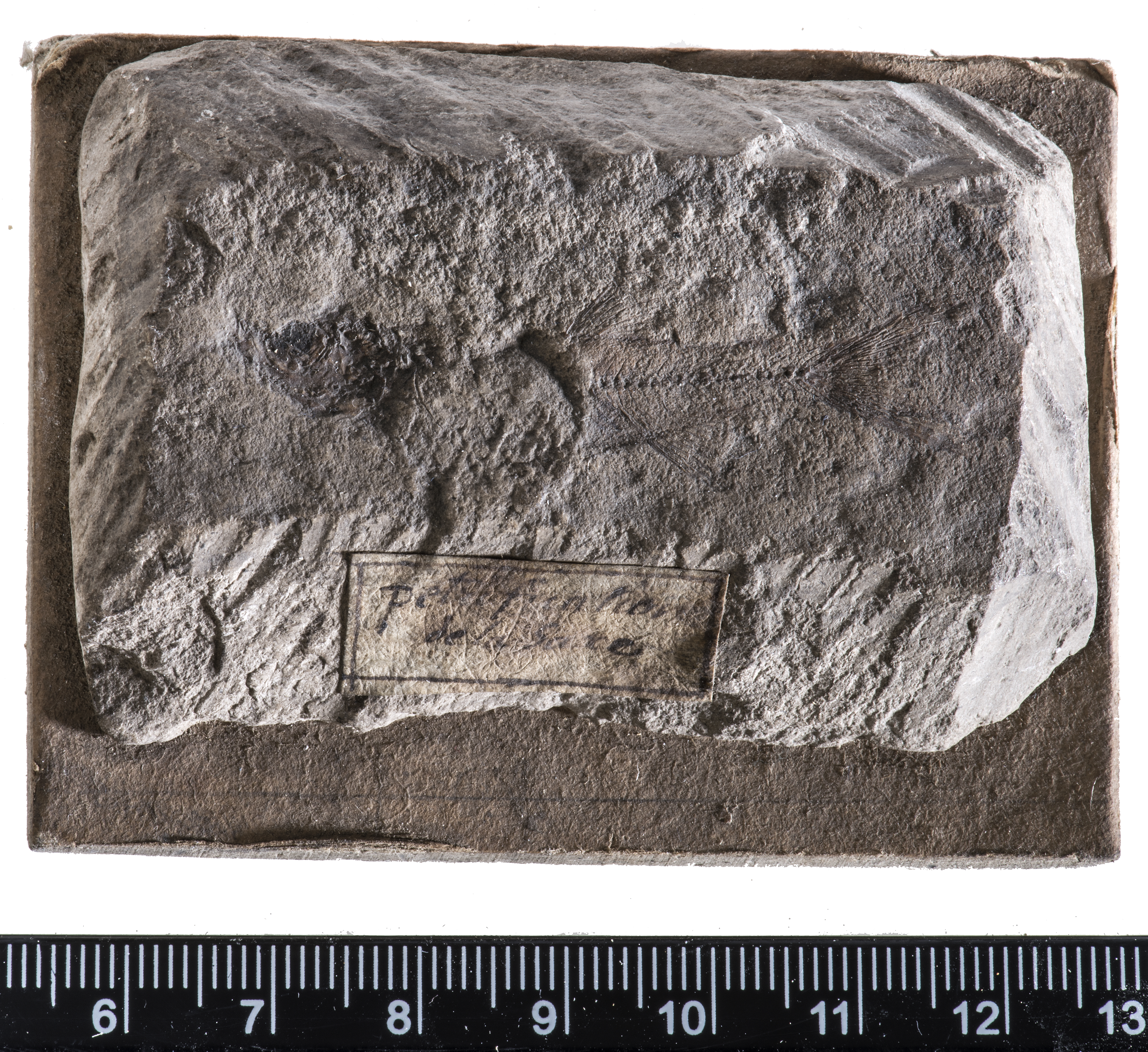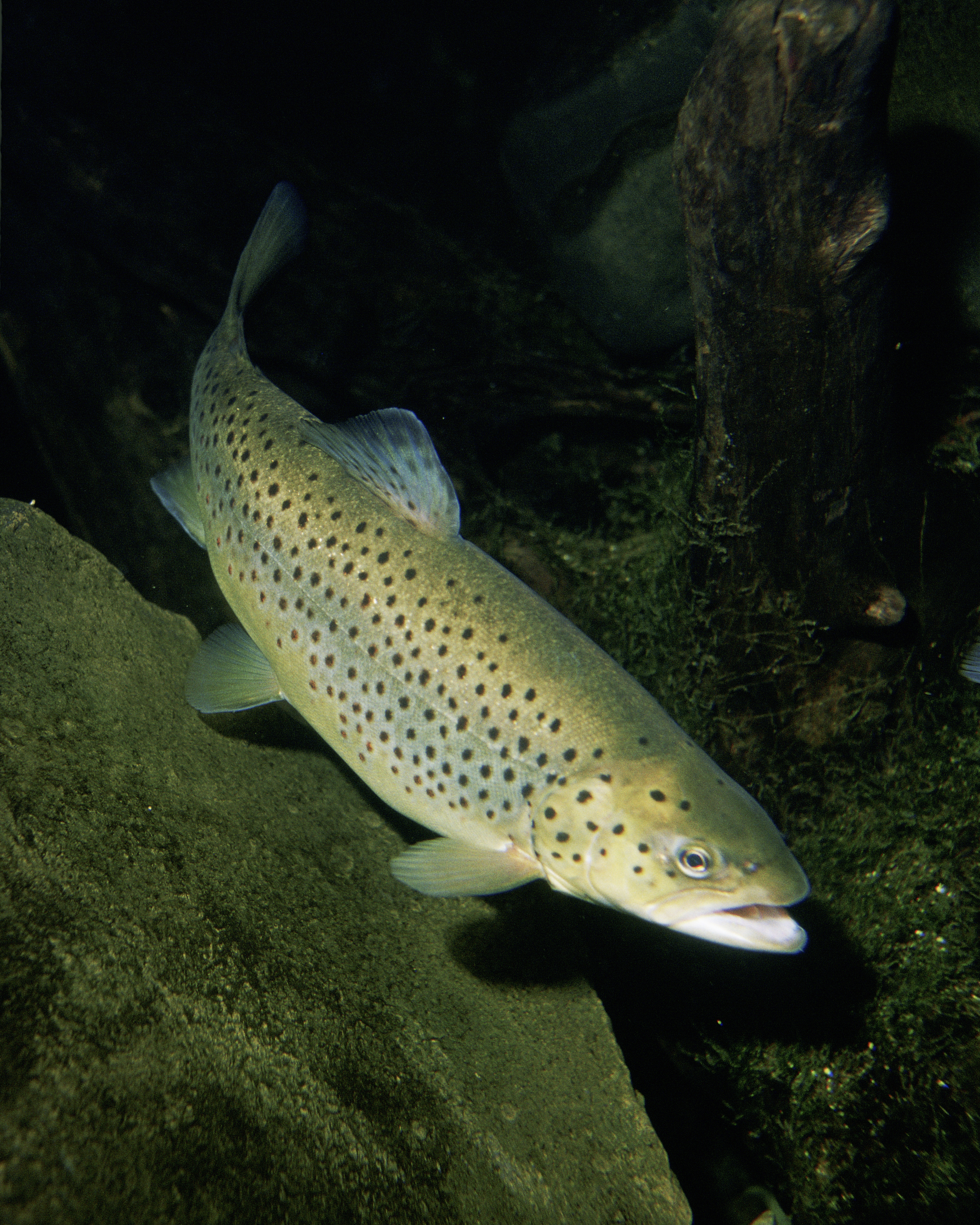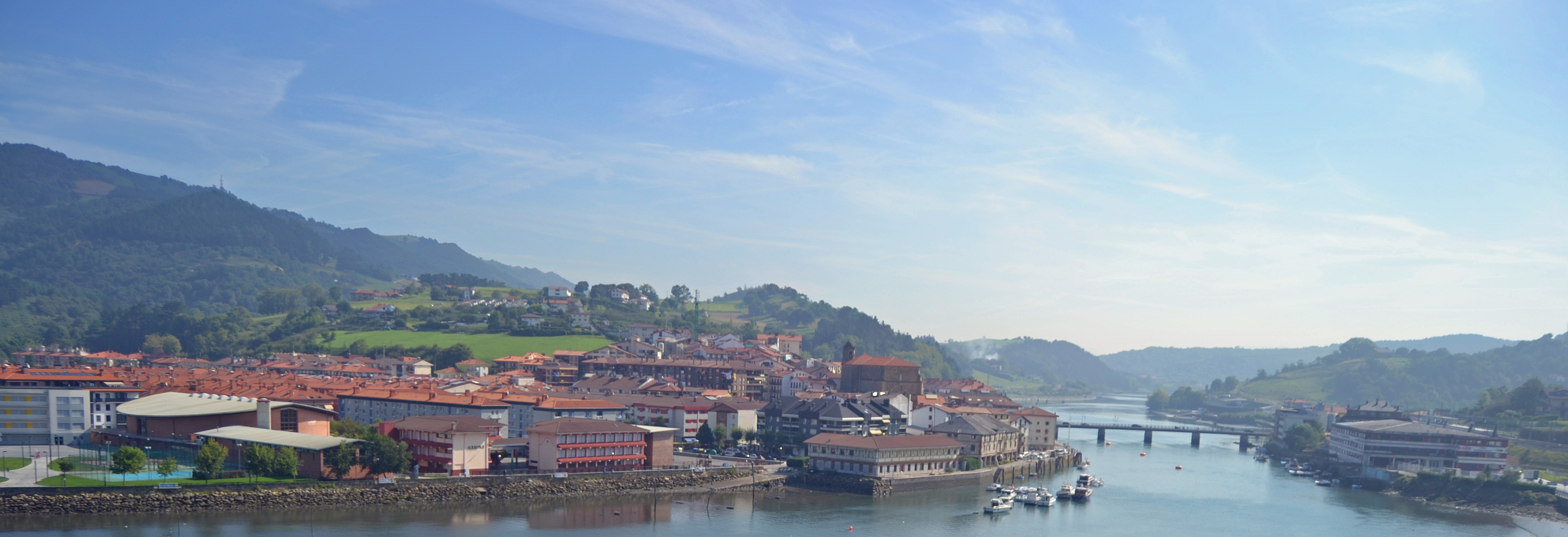|
Oria (river)
The Oria is a river in the Basque Country at the north of the Iberian Peninsula. It's one of a series of Basque rivers flowing into the Bay of Biscay (Atlantic basin) and the main river of the province Gipuzkoa in volume (25.6 m3/s), length (75 km) and basin (882.5 km2), the main feature of these rivers aligned south to north being their shortness. The maximum elevation at the source is 1,260 m, while at its lowest height the tidal influence extends inland up to Usurbil (estuary). On this final stretch, many marsh and wetland strips dotted the banks of the Oria, although some of them have been drained for agricultural and building purposes. The river rises at the south of the municipality of Zegama near the hamlet of ''Otzaurte'' and the San Adrian tunnel, harvesting the waters of the north-eastern side of the mountain range Aizkorri, so the river results from the merging of several streams. The first town it crosses is the very nucleus of Zegama, with other major t ... [...More Info...] [...Related Items...] OR: [Wikipedia] [Google] [Baidu] |
Lasarte-Oria
Lasarte-Oria is a town located in the province of Gipuzkoa, in the Autonomous Community of Basque Country (autonomous community), Basque Country, northern Spain. It was founded in 1986. It is estimated to have a population of around 19.000 people inhabitants. References External links Official WebsiteInasa - Auñamendi Encyclopedia (Euskomedia Fundazioa) Information available in Spanish language, Spanish Municipalities in Gipuzkoa Donostialdea {{Basque-geo-stub ... [...More Info...] [...Related Items...] OR: [Wikipedia] [Google] [Baidu] |
Ordizia
Ordizia, formerly known as Villafranca de Ordizia, is a town and municipality located in the Goierri region of the province of Gipuzkoa, in the autonomous community of the Basque Country, northern Spain. The professional cycle road race Prueba Villafranca de Ordizia Prueba Villafranca de Ordizia – Clásica de Ordizia is a Spanish professional cycle road race held in Ordizia, Basque Country. The first edition was held in 1922. Since 2005, the race has been organized as a 1.1 event on the UCI Europe Tour ... is held yearly in Ordizia. References External links Official website Ordiziako Ahotsa ORDIZIA in the Bernardo Estornés Lasa - Auñamendi Encyclopedia (Euskomedia Fundazioa) * Municipalities in Gipuzkoa Goierri {{basque-geo-stub ... [...More Info...] [...Related Items...] OR: [Wikipedia] [Google] [Baidu] |
Rivers Of The Basque Country (autonomous Community)
A river is a natural stream of fresh water that flows on land or inside Subterranean river, caves towards another body of water at a lower elevation, such as an ocean, lake, or another river. A river may run dry before reaching the end of its course if it runs out of water, or only flow during certain seasons. Rivers are regulated by the water cycle, the processes by which water moves around the Earth. Water first enters rivers through precipitation, whether from rainfall, the Runoff (hydrology), runoff of water down a slope, the melting of glaciers or snow, or seepage from aquifers beneath the surface of the Earth. Rivers flow in channeled watercourses and merge in confluences to form drainage basins, or catchments, areas where surface water eventually flows to a common outlet. Rivers have a great effect on the landscape around them. They may regularly overflow their Bank (geography), banks and flood the surrounding area, spreading nutrients to the surrounding area. Sedime ... [...More Info...] [...Related Items...] OR: [Wikipedia] [Google] [Baidu] |
Araxes (Basque River)
{{disambig ...
Araxes (; ) was a name given to several rivers in Antiquity, including : * the Amu Darya * the Aras * the Araxes river in Atropatene * the Syr Darya * the Uzboy * the Volga The Volga (, ) is the longest river in Europe and the longest endorheic basin river in the world. Situated in Russia, it flows through Central Russia to Southern Russia and into the Caspian Sea. The Volga has a length of , and a catchment ... [...More Info...] [...Related Items...] OR: [Wikipedia] [Google] [Baidu] |
Leitzaran
The Leitzaran (, or Leizarán in Spanish) is a river and a valley in the Navarre and the Basque Country (Spain). It flows into the river Oria from its right. Its source is in the Leitza municipality in Navarre, and it is long. It enters into Gipuzkoa in a place called Urto. It takes water from the municipalities of Areso, Berastegi, Elduain, Villabona, Urnieta and Andoain and has an area of , of which belongs to Gipuzkoa. Valle de Leizaran The Gipuzkoan part of its basin is known as "Valle de Leizaran" (Leitzaran Valley, while "Leitzaran" means 'the Leitza valley' in Basque), and it mostly shapes up in the "Macizo de Cinco Villas", formed by materials formed in the Paleozoic (concretely in the Carboniferous), mostly slate and sandstone, fold during the Hercynian orogeny. The Leitzaran is very crooked and shows several meanders. The gipuscoan Leitzaran is bounded in the east by the river Urumea’s valley, divided by the Adarra- Mandoegi mountain chain. Altzadi in this ch ... [...More Info...] [...Related Items...] OR: [Wikipedia] [Google] [Baidu] |
Chondrostoma Arrigonis
''Parachondrostoma arrigonis'', the Júcar nase, is a species of freshwater ray-finned fish belonging to the family Leuciscidae, which includes the daces. Eurasian minnows and related fishes. This species is endemic to Spain. Taxonomy ''Parachondrostoma arrigonis'' was first formally described as ''Leuciscus arrigonis'' in 1866 by the Austrian ichthyologist Franz Steindachner with its type locality given as and Júcar River near Cuenca in Spain. It is now classified as a valid species in the genus '' Parachondrostoma'' within the subfamily Leuciscinae of the family Leuciscidae. The genus was proposed in 2007 for four species which were split from ''Chondrostoma'' on the basis of genetic evidence. Etymology ''Parachondrostoma arrigonis'' belongs to the genus '' Parachondrostoma'', this name places the prefix ''para-'', meaning "near to" or "similar to" in front of the genus name ''Chondrostoma'', which is a combination of ''chondros'', a word meaning "gristle" or "cartilage", ... [...More Info...] [...Related Items...] OR: [Wikipedia] [Google] [Baidu] |
Phoxinus
''Phoxinus'' is a genus of freshwater fish in the family Leuciscidae of order Cypriniformes, and the only members of the subfamily Phoxininae, or Eurasian minnows. The other species in this genus are also commonly known as minnows. The name "minnow" was what early English fisherman used to describe "small and insignificant". The genus ''Phoxinus'' is found throughout Eurasia, and includes 21 known species. Previously, members of the North American genus '' Chrosomus'' were also believed to form part of this genus. Species ''Phoxinus'' contains the following species: * '' Phoxinus abanticus'' Turan, Bayçelebi, Özuluğ, Gaygusuz & Aksu, 2023 * '' Phoxinus adagumicus'' Artaev, Turbanov, Bolotovskiy, Gandlin & Levin, 2024 * '' Phoxinus bigerri'' Kottelat, 2007 (Pyrenean minnow) * '' Phoxinus brachyurus'' Berg, 1912 (Seven Rivers minnow) * '' Phoxinus chrysoprasius'' (Pallas, 1814) * '' Phoxinus colchicus'' Berg, 1910. * '' Phoxinus csikii'' Hankó, 1922 (Danube minnow) * ... [...More Info...] [...Related Items...] OR: [Wikipedia] [Google] [Baidu] |
Barbel (fish Species)
Barbels are a group of carp-like freshwater fish, almost all of the genus ''Barbus''. They are usually found in gravel and rocky-bottomed moderate-flowing rivers with high dissolved oxygen content, known as the '' Barbel zone''. A typical adult barbel can range from in length and weigh between and , depending on species. The name barbel derived from the Latin ''barba'', meaning beard, a reference to the two pairs of barbels, a longer pair pointing forwards and slightly down positioned, on the side of the mouth. Fish described as barbels by English-speaking people may not be known as barbels in their native language, although the root of the word may be similar. For instance, the Mediterranean barbel (''Barbus meridionalis'') is known as ''barbeau méridional'' or ''barbeau truité'' in France, but also as ''drogan'', ''durgan'', ''tourgan'', ''turquan'' and ''truitat''. Europe ''Barbus barbus'', is found throughout northern and eastern Europe, ranging north and east from Great B ... [...More Info...] [...Related Items...] OR: [Wikipedia] [Google] [Baidu] |
Cyprinidae
Cyprinidae is a family of freshwater fish commonly called the carp or minnow family, including the carps, the true minnows, and their relatives the barbs and barbels, among others. Cyprinidae is the largest and most diverse fish family, and the largest vertebrate animal family overall, with about 1,780 species divided into 166 valid genera. Cyprinids range from about in size to the giant barb (''Catlocarpio siamensis''). By genus and species count, the family makes up more than two-thirds of the ostariophysian order Cypriniformes. The family name is derived from the Greek word ( 'carp'). Biology and ecology Cyprinids are stomachless, or ''agastric'', fish with toothless jaws. Even so, food can be effectively chewed by the gill rakers of the specialized last gill bow. These pharyngeal teeth allow the fish to make chewing motions against a chewing plate formed by a bony process of the skull. The pharyngeal teeth are unique to each species and are used to identify spec ... [...More Info...] [...Related Items...] OR: [Wikipedia] [Google] [Baidu] |
Trout
Trout (: trout) is a generic common name for numerous species of carnivorous freshwater ray-finned fishes belonging to the genera '' Oncorhynchus'', ''Salmo'' and ''Salvelinus'', all of which are members of the subfamily Salmoninae in the family Salmonidae. The word ''trout'' is also used for some similar-shaped but non-salmonid fish, such as the spotted seatrout/speckled trout (''Cynoscion nebulosus'', which is actually a croaker). Trout are closely related to salmon and have similar migratory life cycles. Most trout are strictly potamodromous, spending their entire lives exclusively in freshwater lakes, rivers and wetlands and migrating upstream to spawn in the shallow gravel beds of smaller headwater creeks. The hatched fry and juvenile trout, known as ''alevin'' and ''parr'', will stay upstream growing for years before migrating down to larger waterbodies as maturing adults. There are some anadromous species of trout, such as the steelhead (a coastal subs ... [...More Info...] [...Related Items...] OR: [Wikipedia] [Google] [Baidu] |
Orio, Spain
Orio is a fishing town located in the province of Gipuzkoa in the Basque Autonomous Community, northern Spain, with the town nucleus lying on the river Oria, roughly one mile away from its mouth by the Bay of Biscay. Orio had a population of 5,901 inhabitants as of 2016. Traditionally a town attached to the sea and the fishing industry, this sector is losing ground to the more profitable and less demanding tourism, rapidly developing after marshes between the town and the beach were drained with a view to building up new tourist oriented housing. The most widely known and conspicuous sport activity in Orio is the rowing regatta typical of the Basque and Cantabric coastal area, featuring a team represented by the yellow colour. The town is served by Euskotren Trena's coastal line, the N-634 road and the A-8 motorway (since 2010). A festival representing the last catch of North Atlantic right whales within Basque whaling in 1901, have been held on every 5 years. This catch als ... [...More Info...] [...Related Items...] OR: [Wikipedia] [Google] [Baidu] |
Andoain
Andoain is a town in the province of Gipuzkoa, in the autonomous community of Basque Country, in the North of Spain. Nowadays it has a population of 14,637 inhabitants (2019), which has been quite stable since the 90s. Andoain is located where the Oria River meets the Leitzaran river, next to the mountains Belkoain and Buruntza. Andoain is recognized by its green areas surrounding the rivers, which are dense forests, very suitable for hiking and biking (Leizaran Valley). Geography Andoain is situated in the Oria valley, closer to Belkoain mountain. The town is surrounded by several mountains: Buruntza (439 m), Belkoain (488 m), Aizkorri (598 m), Usobelartza (647 m) and Adarra (817 m) and the oria river goes throw the city center. Climate Andoain experiences an oceanic climate (Köppen climate classification ''Cfb'') with abundant rains during the whole year, and moderate temperature, without extreme hot nor cold. Average annual rain reaches 1700 mm and mean temperature i ... [...More Info...] [...Related Items...] OR: [Wikipedia] [Google] [Baidu] |




